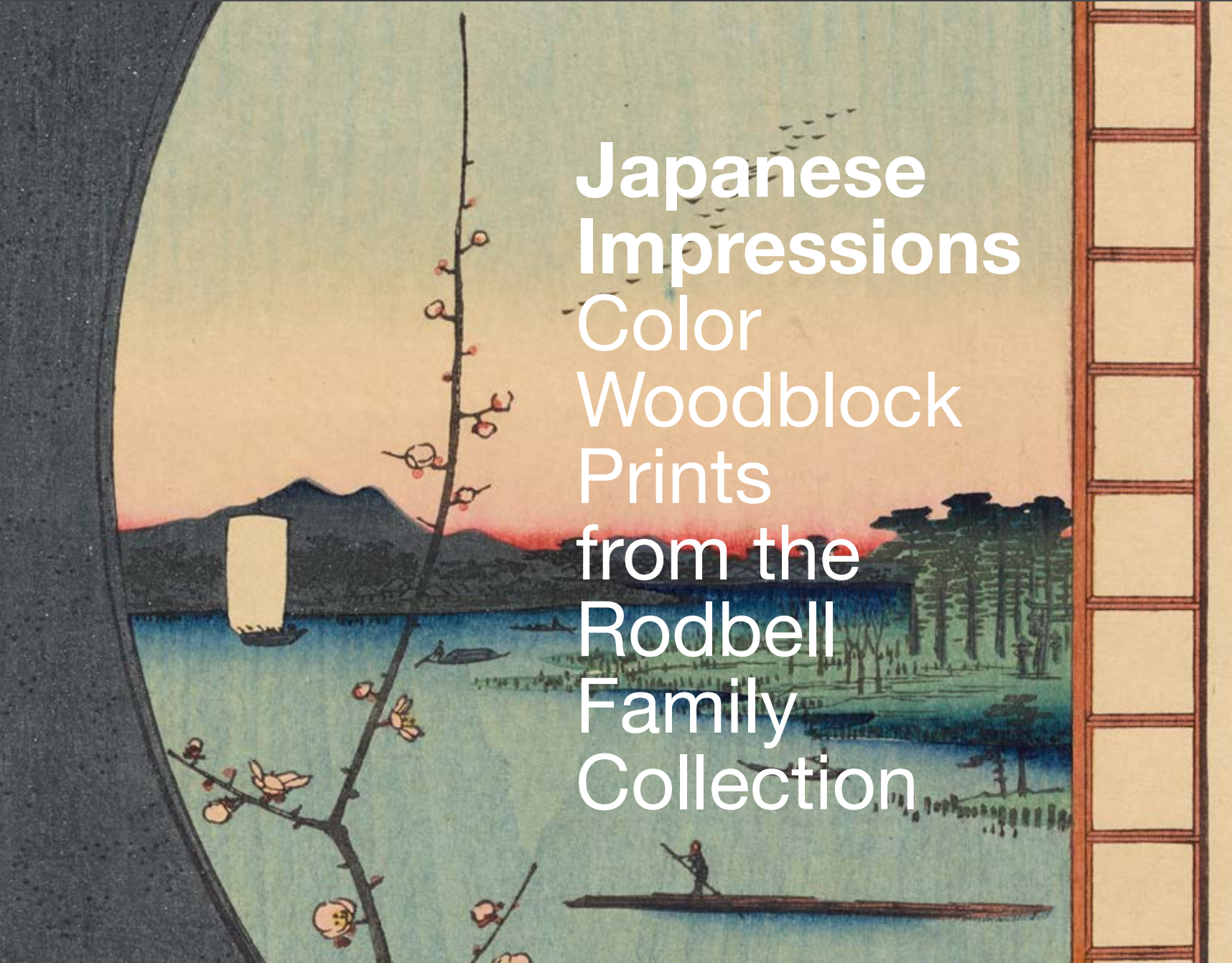
DECEMBER 10, 2016–APRIL 2, 2017
WOODBLOCK PRINTING PROCESS
Utagawa Hiroshige (Japanese, 1797-1858)
Hōki Province: Ōno, Distant View of Mount Daisen, from Famous Places in the Sixty-Odd Provinces, 1853
Color woodblock print
Gift of the Rodbell Family Collection, 2014.16.3
Making color woodblock prints is a complex, multistep process that, in Japan, often involves several different specialists. In the period covered by the Japanese Impressions exhibition, the woodblock print was the result of a close collaboration between publisher and artist, as indicated by a rectangular publisher’s mark typically found in the corner of a finished work along with cartouches or marks that identified the artist and the title of the work. The publisher (or less often the artist) was the orchestrator behind all of these artistic events—they typically initiated the print, selected its theme, and determined its price before following the process through to sale and distribution.
The artist begins by producing a drawing for a potential work, usually in response to a publisher’s commission for a larger series. The artist then presents the drawing to a block-copyist, who reproduces the work on a very thin sheet of paper. This thin sheet is pasted, face down, onto a block of cherry wood. The carver then adds an oil solution to the paper that enables it to be peeled away from the wood while still leaving a clear imprint of the artist’s design upon the block.
The woodblock carver then carefully carves away at the wood where no ink will be printed. This requires a difficult reversal of the artist’s design—the raised, untouched elements of the block carry the ink, and the deepest elements represent negative space in the final print. This single block would then be used to create a number of impressions, and a different block of wood would be carved for each successive color. At times, to save on the use of precious wood, different parts of one block would be used to ink more than one color.
After all blocks are carved according to color, the printers are responsible for creating the final, printed image. Registration marks, indicating where a block should meet the paper, ensure the correct alignment of the block to the sheet between the application of different color blocks.


